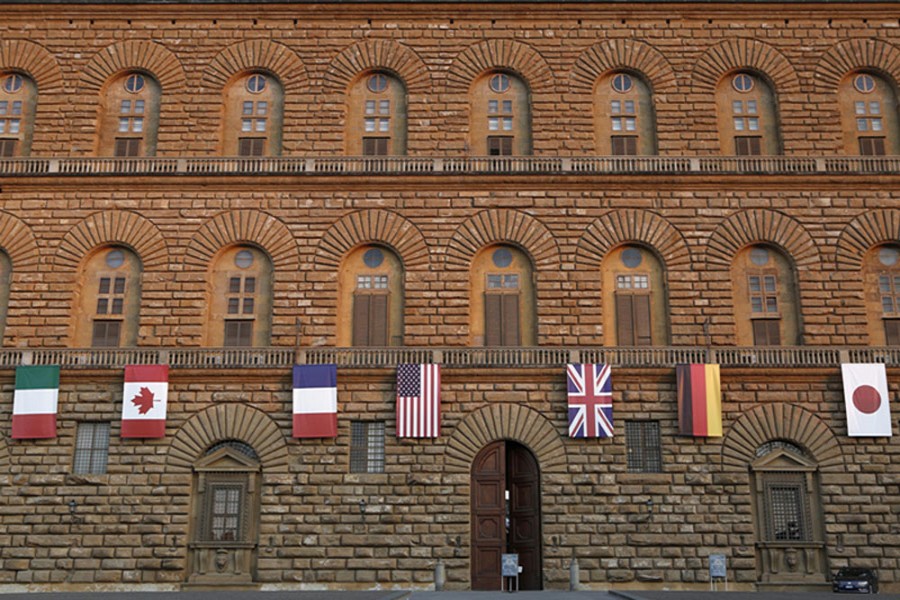With eyes fixated on China, the just concluded G7 summit in the UK announced an infrastructure plan, aiming to rival the Belt and Road Initiative (BRI) adopted and implemented by China.
Though it was entitled as a "Build Back Better World" (B3W) initiative, experts pointed out that it is naïve for anyone to believe that the G7 plan would ever come into existence.
Without any detail revealed about how the plan will work, the B3W initiative was said to "provide a transparent infrastructure partnership to help narrow the $40 trillion needed by developing nations by 2035," the Reuters reported, citing the White House.
Months before the announcement, media outlets hinted the plan being discussed by US and UK leaders. It has since been deemed as "a pirated version BRI" by Chinese netizens.
It is more than welcome to see rich countries under the G7 framework working to help boost the recovery of developing countries if they can; however, helping developing countries may never be put on the agenda of the US-led Western clique, said Wang Yiwei, director of the institute of international affairs at Renmin University of China.
Behind the so-called B3W plan, it is the US intention to maintain hegemony in the world in the post-COVID era. In addition, the US can use the move to cover its ill-intended attempt to export its surging internal inflation to the world, Wang told the Global Times on Monday.
Unlike the BRI, it is clear that the G7 version does not serve the essential interest of developing countries.
"Taking the African countries as an example, they have been facing an annual infrastructure investment shortfall of $108 billion. The shortfall has long become a major barrier for the development of the continent, and why didn't the G7 realize the demand earlier?" asked Song Wei, an associate research fellow at the Chinese Academy of International Trade and Economic Cooperation.
When it comes to the promotion of the BRI, the Western world has spared no effort to slander this mutually beneficial cooperative framework and to impose pressure on other countries not to cooperate with China. With their effort turning out to be barely effective, some of the developed Western countries have tried to roll out similar plans to compete with BRI, including countries such as Australia and Japan, Song said.
Unrealistic plan
The $40 trillion offer to "narrow the need by developing nations" by 2035 in the proposal has sparked sarcasm among netizens. It is simply hard to believe that the G7 countries could offer such an amount of money which is more than the combined GDP of the seven countries in 2020, they said.
The US itself has seen record high national debts. The Biden administration's new proposed infrastructure plan has been downsizing, from the original $2.3 trillion to the recent $1.7 trillion, which seems still not enough to gather support from the Republicans. And the UK's financial deficit has hit a record high in 50 years and its national debt is expected to rise to 93.8 percent of GDP next year.
Moreover, infrastructure projects usually demand huge investments while have a long horizon for a return. The so-called B3W initiative, as media reports revealed, will be used to mobilize private-sector capital in areas such as climate, health, digital technology, and gender equality.
There is likely to be significant obstacles in mobilizing private-sector capital to join any projects with long payback period, the climate and other areas mentioned in the proposal are not in line with the current development demand of the less developed countries, Wang noted.
Not to mention the distinct technological gap between China and most of the Western countries when it comes to infrastructure construction. China has been a well-known leading player in infrastructure sector, with distinct advantages in related technology, talent, experience, management, as well as capital, the experts said.
Tangible BRI benefits
The BRI, in fact, is much more than infrastructure cooperation. Since its emergence in 2013, it has been promoted based on effective connection with local countries' development strategies, bring in tangible benefits to local economies.
So far, China has signed cooperation agreements with 140 countries and 31 international organizations under the BRI framework. In Africa alone, 46 countries and the African Union Commission have inked agreements with China. In spite of the COVID-19 pandemic, many Chinese engineers and technicians are remaining at their position in Africa, facilitating the construction of more than 1,100 cooperation projects in the continent.
According to a McKinsey survey in 2017, of Chinese firms operating in Africa that the organization interviewed, 89 percent of the employees were Africans. "Scaled up across all 10,000 Chinese firms in Africa, this suggests that Chinese-owned business employ several million Africans now," said the survey.
In the first four months of the year, Chinese enterprises' non-financial direct investment in 54 countries under the BRI was recorded at 38.7 billion yuan, up 5.7 percent year-on-year and accounting for 17.4 percent of the total figure in the time frame.
In sharp contrast with the G7 infrastructure plan which aims to compete with China, BRI is built on mutual respect and close people-to-people bonds, Song said, stressing that challenges faced by the BRI has never disappeared and both China and its partners under the framework know what's really in accordance with their national interests.


